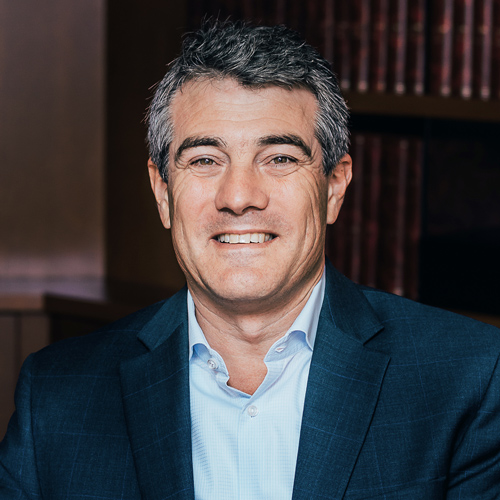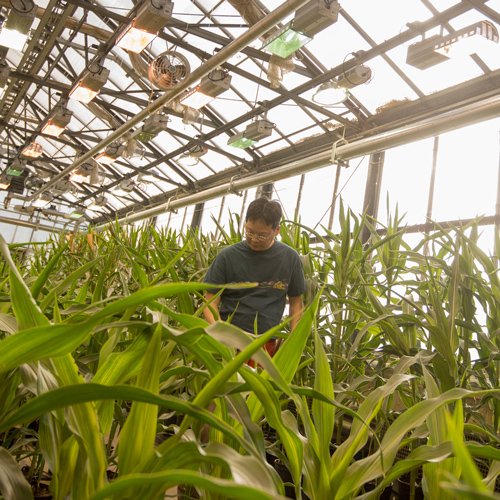When Dolores Gonzalez was hired as the director of special education at IDEA Public Schools in 2005, she wasn’t sure she wanted the job. She’d applied to be a special education teacher at IDEA’s first—and, at the time, only—location in Donna, Texas. Initially, she split her time between serving as director and teaching special education, but as IDEA’s network has expanded, so has her role. Now, she’s the chief program officer for the network of sixty-one public charter schools, which serve students from pre-K through twelfth grade.
And, though she no longer teaches, Gonzalez’s background in special education has profoundly affected her approach to student and teacher success. “I would love it if every teacher were a special education teacher first,” she says.
In that role, Gonzalez created individualized education plans for each of her students. Now, she applies that approach to both student instruction and teacher training. “It’s not a one-size-fits-all for everybody,” she says. “There is, and has to be, differentiation.”
One of IDEA’s missions is to prepare students from underserved communities for college—a goal that begins before students enter the building. In 2014, Gonzalez led the launch of IDEA’s pre-K program after realizing that 40–60 percent of the school’s students were starting kindergarten unprepared. “We were spending a lot of time during the kindergarten year getting kids ready for kindergarten,” Gonzalez says. In many classrooms, that preparation took a semester, and teachers had to fit a year of kindergarten curriculum into five months of school. By the end of the program’s pilot year, 94 percent of its pre-K students were able to start kindergarten prepared.
Gonzalez works with each school’s principal to determine when and how to introduce a pre-K program. “It’s important for me that I’m not dictating that you have to do pre-K,” she says. “I’m hoping that the results start to speak for themselves.” They have. In the 2017–2018 academic year, nineteen of IDEA’s thirty elementary schools will have pre-K programs.
To address the achievement gap among older students, Gonzalez introduced the Critical Student Intervention (CSI) program, which targets third through seventh grade students who are two or more grade levels behind in reading or math. Students in the CSI program attend their grade-level English and math classes and receive additional small-group support during the academic elective period.
Gonzalez’s goal is for every CSI student to achieve two years’ worth of growth in one academic year. Since the program’s 2014 launch, the percentage of students that has reached that goal has surged from 23 to 53 in reading and from 32 to 53 in math.
Pre-K prepares the youngest students to enter school, and CSI closes the achievement gap in the middle grades, but IDEA’s ultimate goal is for every student to graduate from college. When IDEA alumni reported struggling with the rigors of higher education, Gonzalez created the AP for All program. “All the research shows that if you provide kids an advanced placement experience in high school—just that experience, even if they don’t pass the AP exam—they’re four times more likely to graduate from college,” Gonzalez says. “If they pass the test, that jumps up to seven times more likely.”
Among Gonzalez’s current goals is for 30 percent of students in each graduating class to be AP Scholars—a College Board designation that recognizes students who have passed three or more AP exams. The exam is graded on a scale of one to five; to pass, a student must receive a three or higher. In the first year of AP for All, 15 percent of graduating seniors were AP Scholars. The second year, the number jumped to 21 percent. The third year, Gonzalez predicts, 25–30 percent of students will graduate as AP Scholars.
“It’s not a one-size-fits-all for everybody. There is, and has to be, differentiation.”
—Dolores Gonzalez
The AP for All program requires every IDEA student to complete eleven AP courses during high school. To prepare teachers for the shifting workload, IDEA partnered with the National Math and Science Initiative (NMSI) in Dallas, which facilitates training sessions throughout the year and pairs AP teachers with mentor teachers located throughout the United States. IDEA also recruited one of NMSI’s trainers who specializes in chemistry to become an IDEA curriculum writer. He is developing a series of videos that demonstrate how to teach scientific topics, and he leads a summer AP Boot Camp to show teachers how to teach complex concepts and differentiate instruction for higher-level classes.
For a student who reads below grade level, completing AP coursework is a significant challenge. But even for students who don’t pass the exam, the experience is valuable, Gonzalez says. “The debates that happen, the Socratic seminars that happen, the research that happens, the peer tutoring opportunities that they have—it’s still really rich information,” she explains. “It’s ultimately going to prepare them better for college than non-AP coursework.”
In 2018, IDEA will open four new schools in Baton Rouge, Louisiana—the network’s first schools outside of Texas—along with fourteen in its home state. By 2022, IDEA plans to serve 100,000 students in 173 schools. The demand is high; in 2016, IDEA wait-listed 40,000 students who weren’t chosen in the school’s lottery admission process.
Thanks to IDEA’s intensive preparation approach, every senior for the past ten years has graduated college-bound. Many, like Gonzalez, are the first in their families to graduate from college; she and her sister share that honor, having graduated on the same day. Sixty-five percent of IDEA’s 2017 graduates were first-generation college-goers, and with every new school that opens, more students have the opportunity to achieve that goal. “Those are the things that motivate me,” Gonzalez says.
The nonprofit National Math and Science Initiative works with administrators, teachers, and students within local schools across the country to empower teachers and equip students with the knowledge and skills needed to thrive in college and the 21st-century workforce. Through proven programs at the elementary, secondary, and post-secondary levels, NMSI produces measurable and lasting outcomes, closing persistent opportunity and achievement gaps and propelling the futures of students in schools large and small, rural and urban.

